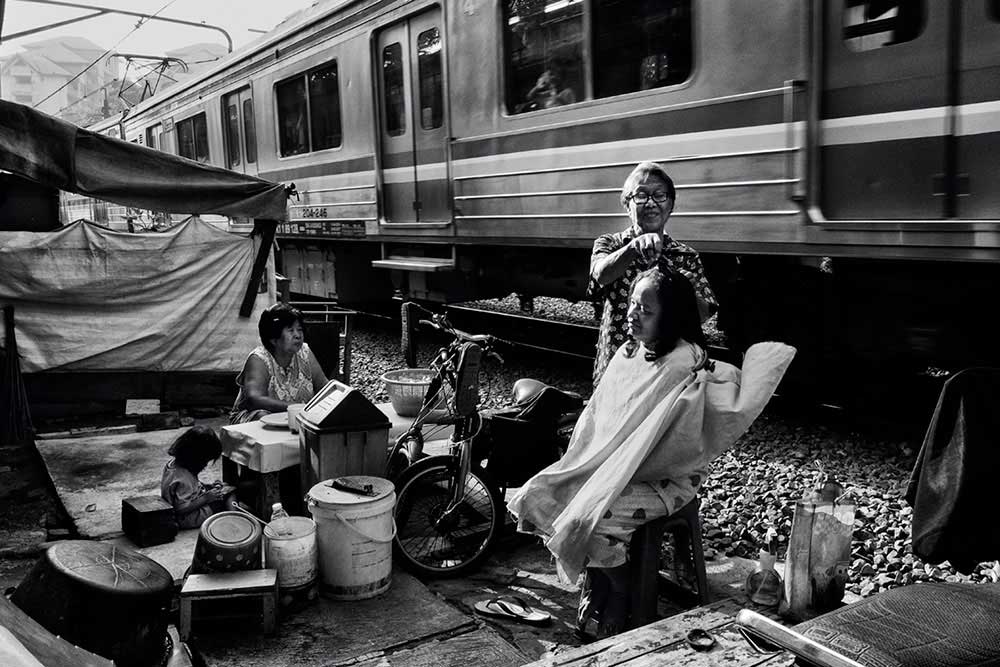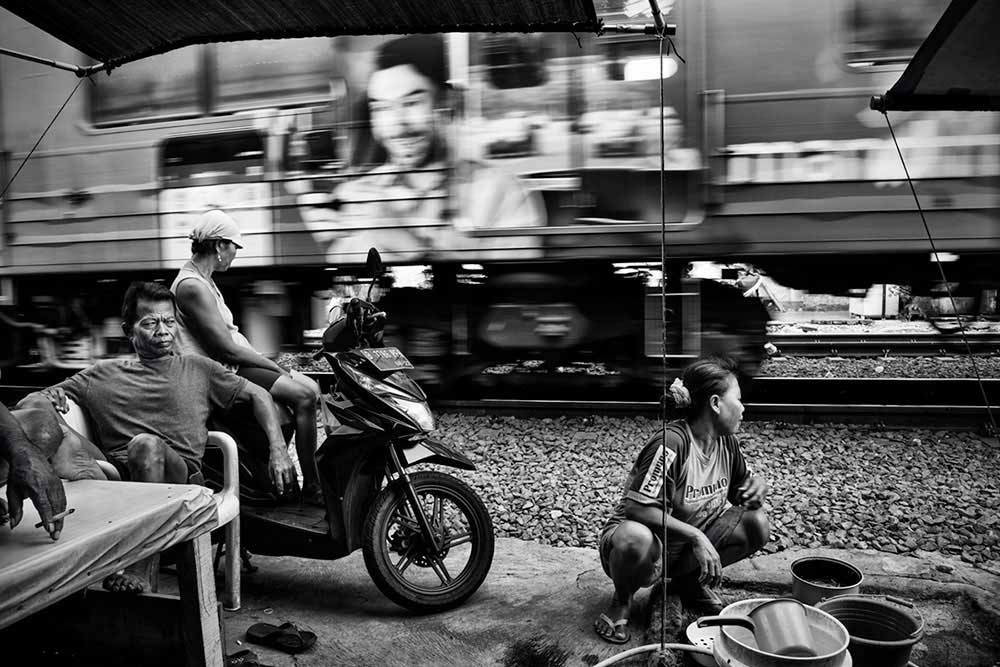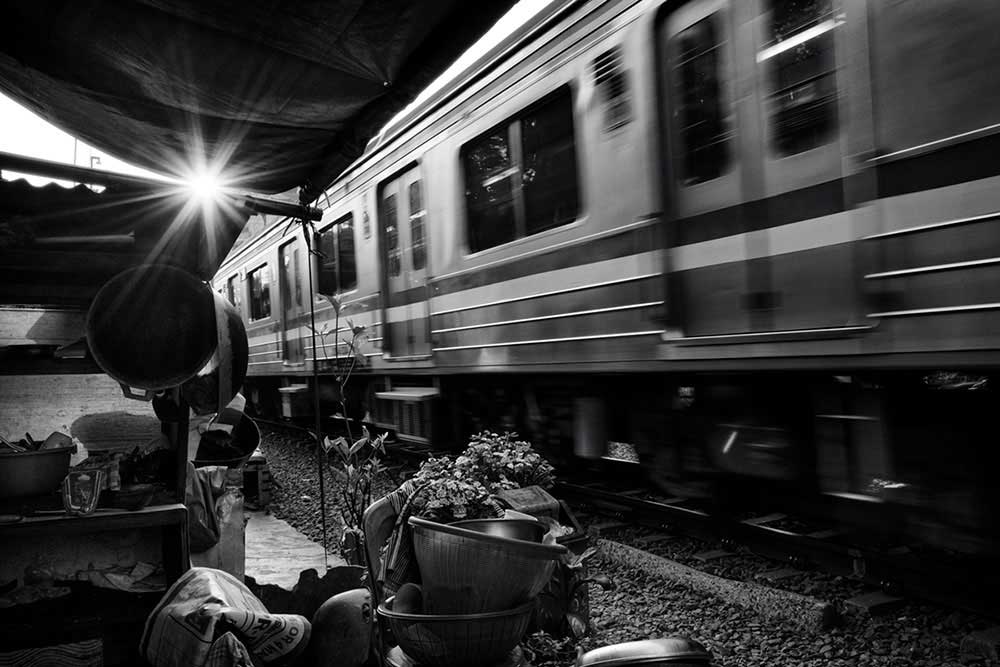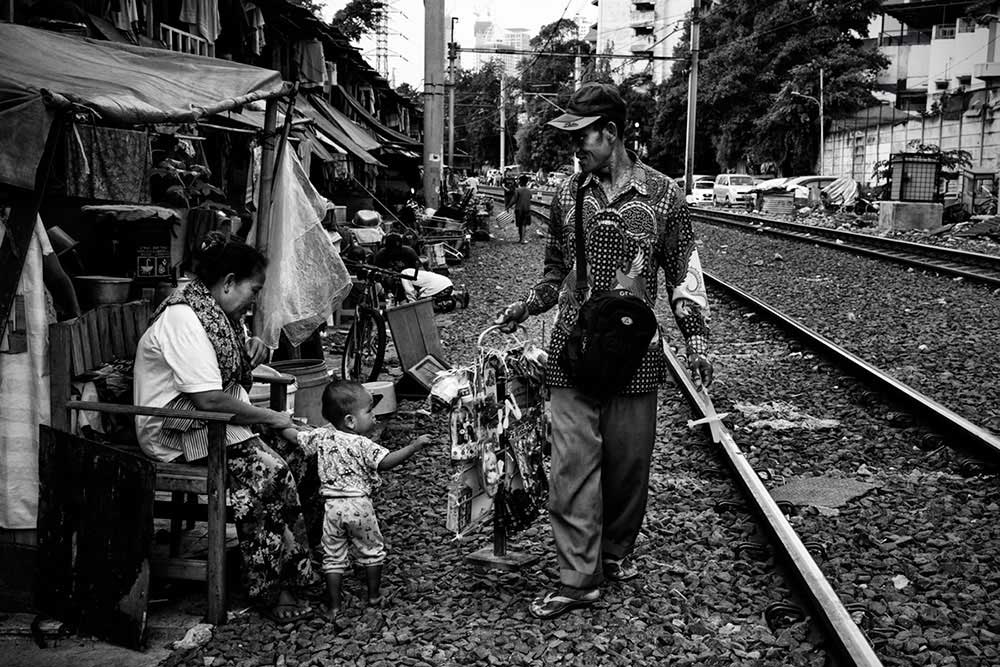 GRACE HO PUI WAN, FINALIST AND PUBLISHED IN OUR BLACK & WHITE 2019
GRACE HO PUI WAN, FINALIST AND PUBLISHED IN OUR BLACK & WHITE 2019
Grace graduated from National University of Malaysia and currently work as a general manager in Kuala Lumpur. She has picked up photography as a hobby in 2013 when her best friend Ujin bought her a hardcover photography book; She started her photography journey and learned to shoot in few genres including people, architecture, macro, fine art, street photography, landscape and under water.
After years of shooting, her interest sharpened and focused more on the captured peoples and issues related with human element. Grace enjoys the interaction of emotion, the humanity, and mode of feeling between the subjects and herself. As a passionate photographer, she always considers photography a way to perpetuate a moment, with all the associated emotions and feeling. To Grace, a good image tells a story, It will inspires the spectator’s feeling and emotion and encourages the viewers wanted to know more about the people, their cultures, or sceneries in different places through her lens.
I’d like to begin by discussing your journey as a photographer. How you discovered an interest for photographing people and specifically documentary photography? Furthermore, what made you transition into capturing images that deal with storytelling?
When I started to pick up photography, I learnt to shoot many genres, from macro, landscape, night scape, long exposure, street photography… slowly I noticed capturing images related with human elements is very challenging yet fulfilling.
I am inspired by Henry Cartier Bresson when I started street photography and journalism. The moment, yes, i will always have to wait for the moment and connection between the elements and surroundings to infuse, triggering the shutter… and the image is unique and the moment will never happen again, the communication between my mind and the subjects that I captured creating a magical persona to me, this granted me satisfaction.
A friend of mine recommended me to watch war photographer James Nachtwey’s interview, he mentioned this: as a photographer, we have the chances to travel to other part of the world than other peoples do, therefore we have the social responsibility to capture the truth and real life occurrences and show them to the world what’s going on out there…. This really inspired me and I started to think, I should do something, although I’m not able to become a war photographer but I able to capture the scenes and things happen at places where I travelled, started with single image then I decided to challenge myself to do it in the form of storytelling, which I never do before..
I started my first series of storytelling early of 2019 and very fortunate and blessed it has granted me a Spotlight Awards from Black & White Magazine, Dodho Magazine also given me huge support and encouragement to publish my 2nd and 3rd series of photos in their magazine.
“One day at a time” is clearly a concept that has been carried throughout this entire project and also with you as an individual. These images showcase an array of elements that happen simultaneously and underline the nature of what living with nothing is like. Did you anticipate this level of poverty before visiting the shantytowns of Jakarta, and what was is like being exposed to this environment?
I got to know shanty town through some of the literatures and image from internet. When I was in Jakarta, I decided to explore and get to know more about this area.
Honestly, before I stepped into this shanty town, my perception of this area is that people there are extremely poor with no facilities and infrastructure, forgotten by the government and living condition cannot be comprehended, no appreciation for hygiene leading to widespread of illnesses hence the residents should be under depression and struggling to live in the big city.
Whilst I did see what I initially perceived, what surprised me was I did not see the gloominess or felt a sense of sadness or depression as I was greeted with welcoming smiles and warm gestures.
It feels as if this project is somewhat a symbolical investigation about the purpose of the environment as well. And while I found it fascinating just how close many of these structures and houses are to the train tracks themselves, there is a sense of community between the people of Jakarta and the space they inhabit. Do you believe that this project is therefore an investigation about the symbolic importance of the train tracks and its relation to the people around it?
Almost all the dwellers at this shanty town came from others states of Indonesia. They left their hometown for Jakarta in search of better living for their family. Unfortunately, the rental and cost of living in big city like Jakarta is too high. As most of these job seekers couldn’t afford to rent a proper house or room, this shanty town that is the ghetto of Jakarta became their only choice of residency. Shanty town was established next to the train track which is located at centre of Jakarta where it’s residence can easily walk to the main road to take buses or just ride their scooter to work, it’s a place at town centre yet with the lowest rental that they can afford……
The trains can bring some of them back to their home town hence easing commute, shanty town was built around the train tracks where peoples can get easily access to many places, there will bring some hope for the people to get a better job for better living…
Continuing on from my previous question about the nature of the train tracks, and the many parallels surrounding it. The images in this collection focus a lot on children and their ‘playground’ attitude to the landscape in which they live. Are you attempting to expose the lack of education that many of these children do not have?
I love children and will automatically captured children images whenever I see them. From the conversation with the local dwellers when I was there, some of the children in shanty town do not have the chance to go to school. I was told that early in the morning, these children will walk to the main road and started to “look” or beg for the money…To me every child is precious and they should be protected and given the right to enjoy their childhood and obtain education but unfortunately not all of them have these privilege which is so heart breaking to see. Whilst it was not my intent to expose the lack of education provided to the children of shanty town, this is indeed a fact and naturally the story from my lenses tells the same tale.
Despite the lack of formal education, I have to give credit to local volunteers who dedicate their time to provide free coaching every Saturday afternoon, and their “classroom” is a empty space next to the train track. I believed that if we expose the condition of the children, they will be given due attention and opportunity to learn and lead a better future.
One example of exposing the truth and the positive impact this brought to the children of shanty town is as explained. Before I entered shanty town, I engaged the service of a local university student named Bintang to transfer me to this area and back to my hotel on a daily basis. As a local, he never realised in Jakarta there is such a places and environment like this. After a few days of communication with local dwellers, he decided to be one of the volunteers to coach the children some basic education to the children there…
I felt happy as my visit influenced Bintang to see the reality of life and the little effort he could do for his society.
I am curious to know if you had any opportunity to converse with the various people you have photographed throughout this project. And if so, what were you able to discuss?
Yes, in fact I talked to the locals every day when I was there and throughout my photo shoot sessions. The locals were extremely comfortable with my presence to the extent that they ignored my existence even I carried the camera around taking pictures and things that may seem odd to them
Throughout this time, I talked to many of the residents in shanty town and managed to appreciate the reasons for them leaving their hometown and how they managed to survive in the big city. We talked about the history of the shanty town and even discussed about the safeness of living next to the train track which is only a few feet away from their house. The local were not shy to discussed their personal opinions of government policies and how it had made their living condition better or worse off, their feeling of staying in such a location, their children’s education and future, their work and so on.
Different peoples have different stories, like one of the residence called Pak Nyamuk, he come all the way from Jawa Tengah and he left his wife and two children at his home town. Since he can’t get any job at his home town, he came to Jakarta to start a small simple kiosk to sell Mee Ayam (chicken noodles) to support his family and his bed ridden wife who has not been treated and bed ridden for 3 years …
You mentioned in your statement that “We never know what’s happening behind closed doors”. During this photographic investigation, were you ever given the opportunity photograph inside some of these shelters? Or do you believe that this would have been an insensitive decision to bring to light someone’s private life?
As I mentioned earlier that through the few days wandering at this shanty town, the residences treated me as a friend, and they bought me water and nuts during our chats. They also invited me to visit their “petak” (means small area) to see their living condition and welcomed photography. These residents felt comfortable with their means of simple living and had nothing to hide. In fact, proud that they are making an honest simple living. Some even felt safe to stay there as they have nothing to risk from theft or robbery hence keen to share their lifestyle with a foreigner like myself. This helped me self-reflected on the constant fears of having too much possessions hence our societies’ worries with respect to theft and robberies in my own lifestyle and in my city.
In summary although I do agree that taking photographs and publicising their living condition is indeed an invasion of privacy, the dwellers them self’s do not feel the same but very open to welcome my quest and curiosity.
I’d like to discuss the images themselves briefly. Was it your intention to capture the chaos of life and the many activities surrounding the shantytowns of Jakarta?
Not really. I had mentioned earlier in my perception before entering this shanty town was different to what I saw from an emotional perspective and what I felt after talking to many residences there. In fact, I didn’t do much shooting on the first day as I was observing the peoples and environment and talked to local peoples about their daily life which is generally an orderly chaos from dawn till dusk.
To further elaborate, I noticed as an outsider the stereotype perception does not reflect the actual lifestyle and their attitude towards life. Although these people do not have much, they were satisfied and happy with what they were able to make do. Despite the constant chaos, the area is very safe, and each have very good relationship with all their neighbours helping each other in time of need. One even told me we have to learn live with one day at a time as we do not know what will happen tomorrow, so live with fullness. For example, Pak Nyamuk, he told me every day he will sell around 80 bowls of chicken noodles, after finished selling the noodles he will close the kiosk and rest. I asked him why not increase the volume so he can make more to support his family, he just replied that his income is sufficient to support his family and he feels enough for his own living.
It was then That I found the theme of ‘one day at a time’ capturing the smiles in the midst of chaos.
I would like to conclude by asking you if this project will be continued and if not are there any projects in the works that follow a similar narrative?
In fact, I plan to continue another series of images talking about the daily life of Pak Nyamuk and another project about the children of shanty town, their daily activities and their education support especially from the coaching of volunteers and any success stories from the volunteers’ efforts. These will be some of the project I wish to carry on because I was not able to do it during my stay in Jakarta. If opportunity arises, you could expect those will be my follow on project on shanty town.
Francesco Scalici
A recent MA graduate from the University of Lincoln, Francesco has now focused on landscape photography as the basis of his photographic platform. An author for DODHO magazine, Francesco’s interest in documentary photography has turned to writing and has had various articles, interviews and book reviews published on platforms such as: ‘All About Photo.com’, ‘Float Magazine’ and ‘Life Framer Magazine’. Currently on a photographic internship, Francesco has most recently been involved in the making of a short film titled: ‘No One Else’, directed by Pedro Sanchez Román and produced my Martin Nuza.











